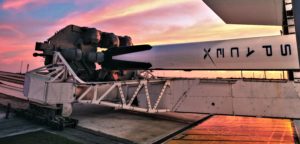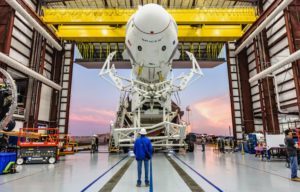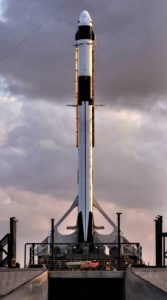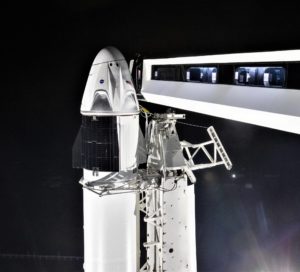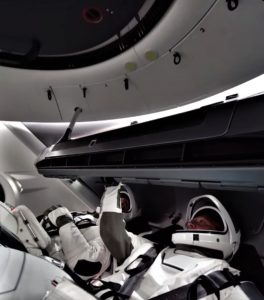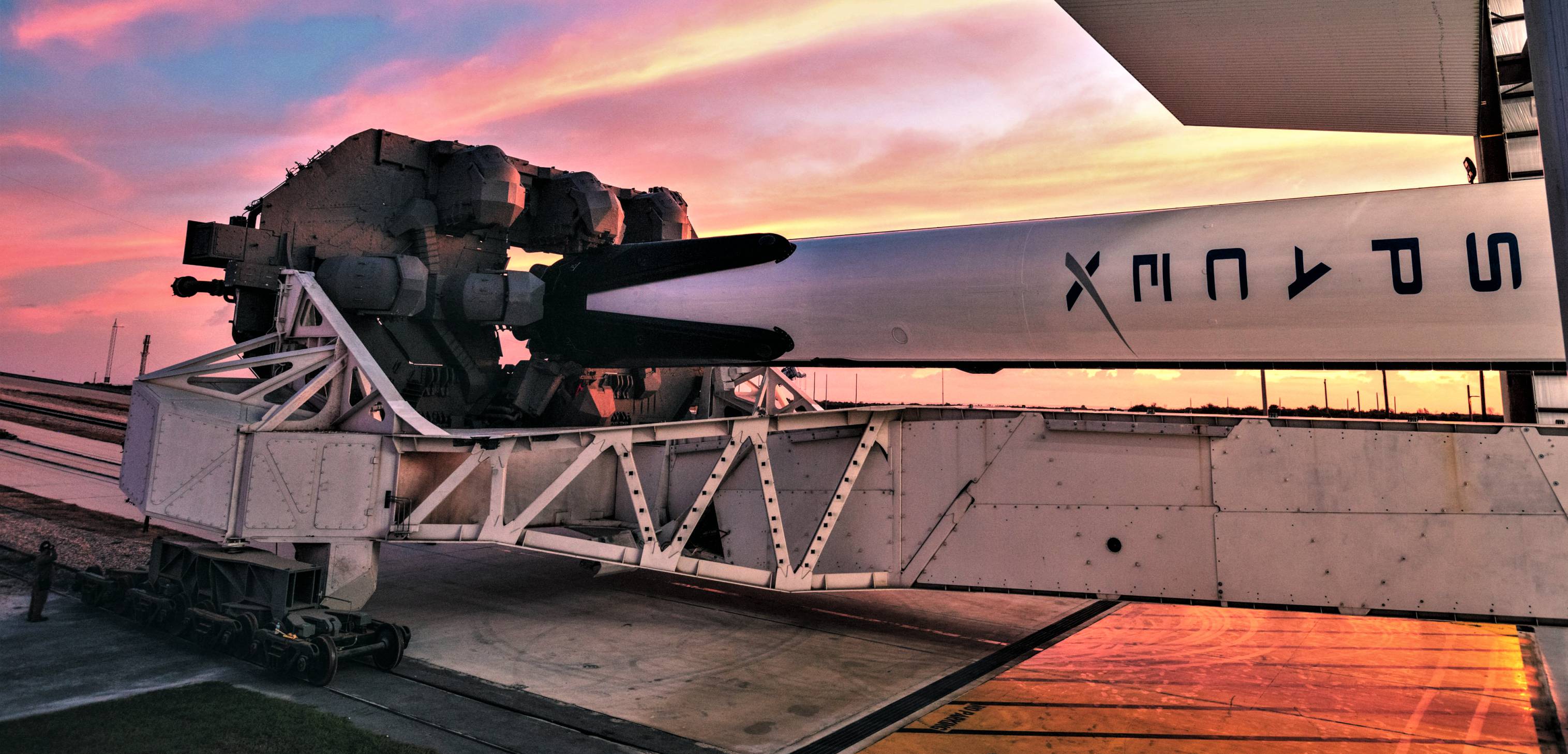

News
SpaceX’s Crew Dragon settles on Feb 9 launch debut as Falcon 9 nears static fire
Update: NASASpaceflight.com is reporting that ISS planning documents suggest that Crew Dragon’s first launch has slipped into the second half of February, perhaps February 16th.
In the midst of several confusing delays, schedule updates, and official statements, the orbital debut of SpaceX’s Crew Dragon spacecraft has made its way onto the Eastern range’s planning schedule for the first time, placing Falcon 9 B1051’s static fire and Crew Dragons launch no earlier than (NET) January 23rd and February 9th, respectively.
As the brand new spacecraft’s first attempted trip to orbit, the demonstration mission (Demo-1/DM-1) will be performed without crew aboard, allowing SpaceX and NASA an opportunity to fully verify performance and explore Crew Dragon’s capabilities without risking the lives of the astronauts that will step inside a nearly identical vehicle as early as June or July.
Obviously preliminary, but the Eastern Range is now showing the Static Fire for the DM-1 mission's Falcon 9 (B1051.1) as NET January 23, (and still showing NET February 9 as the launch date). As always, but especially this one, all very much subject to change. pic.twitter.com/EWOEpbpI9o
— NSF – NASASpaceflight.com (@NASASpaceflight) January 17, 2019
The US government has been shut down for more than four weeks as a consequence of the inability of elected representatives to pass and sign a funding bill, now the longest shutdown in the country’s history. As a result, more than 95% of NASA’s workforce has been furloughed, leaving around 800 people left working (without pay) across the agency in positions or groups deemed absolutely essential to avoid loss of life or property damage.
How NASA defines “essential” is unknown but it seemed improbable that the Commercial Crew Program – around six months away from actually launching astronauts and presently marked by NASA’s attempts to complete reams of approval and certification paperwork – would fall under that extremely narrow umbrella. Delays to Crew launches are unlikely to harm hardware or directly risk harm to astronauts, although a very tenuous case could be made that delays to the program now would snowball and cause the debut of operational crewed launches to slip so far into 2019 (or even 2020) that NASA could lose assured access to the International Space Station (ISS) for several months. Again, there is no obvious way that a slip like that would actually increase the risk to life or limb for astronauts and hardware/infrastructure.
Apparently, Demo-1 and 2 don't need FAA launch licenses (under auspices of NASA, like TESS launch. Post-certification missions will require FAA license, like CRS flights today
— Irene Klotz (@Free_Space) January 16, 2019
Despite the logical improbability that NASA’s Commercial Crew Program (CCP) would – at this point in time – remain operating at full capacity during an extended government shutdown, NASA provided a statement to The Atlantic earlier this week more or less implying that CCP was deemed essential and has continued to operate for the last several weeks. There is certainly some wiggle room in NASA spokesman Bob Jacobs’ comments, enough to make it ambiguous if they are primarily PR spin, frank honesty, or something in between.
A SpaceX spokesperson added [paraphrased by The Atlantic] that “if NASA made the call, the company would carry out the uncrewed [DM-1] launch”, a tactical nonanswer that redirects the impetus to NASA. It’s not clear if the people at NASA that would ‘make the call’ to launch are furloughed or not – they certainly would not be essential in the sense described by NASA’s own overview of the current shutdown’s impact. Originally targeting a launch sometime in mid to late January, an official NASA update posted on January 10th showed that Crew Dragon’s first launch had slipped into February (on the launch range for February 9th).
- DM-1 and Falcon 9 were greeted by an extraordinary – albeit mildly bittersweet – dawn during their first-ever trip out to Pad 39A. (SpaceX)
- The integrated DM-1 Crew Dragon ‘stack’ rolled out to Pad 39A for the first time in the first few days of 2019. (SpaceX)
- Falcon 9 B1051 and Crew Dragon vertical at Pad 39A. (SpaceX)
- Crew Dragon shows off its conformal (i.e. curved) solar array while connected to SpaceX’s sleek Crew Access Arm (CAA). (SpaceX)
- DM-2 astronauts Bob Behnken and Doug Hurley train for their first flight in Crew Dragon. (NASA)
“NASA and SpaceX are now targeting no earlier than February for the launch of Demo-1 to complete hardware testing and joint reviews.” – NASA, 01/10/2019
“Hardware testing” likely refers to the need for Falcon 9 to complete a static fire at Pad 39A, a test now scheduled for January 23rd. It’s ambiguous whether SpaceX can actually perform a static fire test – a complete launch rehearsal involving full propellant loads and the ignition of all nine Merlin 1D engines – at Kennedy Space Center, a NASA operated with federal funding that does not currently exist. Although the Air Force-helmed range is operating at a normal capacity, KSC must still perform a number of basic tasks ranging from infrastructure maintenance to roadblock setup to allow a static fire test – let alone a launch – to occur. I
f SpaceX completes its NET January 23rd static fire with no problems, then it would appear to be the case that some sort of SpaceX-side delay – perhaps augmented or slowed down by NASA operating at 5% capacity – caused the slip from mid-January to mid-February. Stay tuned to find out!
Elon Musk
Why Tesla’s Q3 could be one of its biggest quarters in history
Tesla could stand to benefit from the removal of the $7,500 EV tax credit at the end of Q3.

Tesla has gotten off to a slow start in 2025, as the first half of the year has not been one to remember from a delivery perspective.
However, Q3 could end up being one of the best the company has had in history, with the United States potentially being a major contributor to what might reverse a slow start to the year.
Earlier today, the United States’ House of Representatives officially passed President Trump’s “Big Beautiful Bill,” after it made its way through the Senate earlier this week. The bill will head to President Trump, as he looks to sign it before his July 4 deadline.
The Bill will effectively bring closure to the $7,500 EV tax credit, which will end on September 30, 2025. This means, over the next three months in the United States, those who are looking to buy an EV will have their last chance to take advantage of the credit. EVs will then be, for most people, $7,500 more expensive, in essence.
The tax credit is available to any single filer who makes under $150,000 per year, $225,000 a year to a head of household, and $300,000 to couples filing jointly.
Ending the tax credit was expected with the Trump administration, as his policies have leaned significantly toward reliance on fossil fuels, ending what he calls an “EV mandate.” He has used this phrase several times in disagreements with Tesla CEO Elon Musk.
Nevertheless, those who have been on the fence about buying a Tesla, or any EV, for that matter, will have some decisions to make in the next three months. While all companies will stand to benefit from this time crunch, Tesla could be the true winner because of its sheer volume.
If things are done correctly, meaning if Tesla can also offer incentives like 0% APR, special pricing on leasing or financing, or other advantages (like free Red, White, and Blue for a short period of time in celebration of Independence Day), it could see some real volume in sales this quarter.
You can now buy a Tesla in Red, White, and Blue for free until July 14 https://t.co/iAwhaRFOH0
— TESLARATI (@Teslarati) July 3, 2025
Tesla is just a shade under 721,000 deliveries for the year, so it’s on pace for roughly 1.4 million for 2025. This would be a decrease from the 1.8 million cars it delivered in each of the last two years. Traditionally, the second half of the year has produced Tesla’s strongest quarters. Its top three quarters in terms of deliveries are Q4 2024 with 495,570 vehicles, Q4 2023 with 484,507 vehicles, and Q3 2024 with 462,890 vehicles.
Elon Musk
Tesla Full Self-Driving testing continues European expansion: here’s where
Tesla has launched Full Self-Driving testing in a fifth European country ahead of its launch.

Tesla Full Self-Driving is being tested in several countries across Europe as the company prepares to launch its driver assistance suite on the continent.
The company is still working through the regulatory hurdles with the European Union. They are plentiful and difficult to navigate, but Tesla is still making progress as its testing of FSD continues to expand.
Today, it officially began testing in a new country, as more regions open their doors to Tesla. Many owners and potential customers in Europe are awaiting its launch.
On Thursday, Tesla officially confirmed that Full Self-Driving testing is underway in Spain, as the company shared an extensive video of a trip through the streets of Madrid:
Como pez en el agua …
FSD Supervised testing in Madrid, Spain
Pending regulatory approval pic.twitter.com/txTgoWseuA
— Tesla Europe & Middle East (@teslaeurope) July 3, 2025
The launch of Full Self-Driving testing in Spain marks the fifth country in which Tesla has started assessing the suite’s performance in the European market.
Across the past several months, Tesla has been expanding the scope of countries where Full Self-Driving is being tested. It has already made it to Italy, France, the Netherlands, and Germany previously.
Tesla has already filed applications to have Full Self-Driving (Supervised) launched across the European Union, but CEO Elon Musk has indicated that this particular step has been the delay in the official launch of the suite thus far.
In mid-June, Musk revealed the frustrations Tesla has felt during its efforts to launch its Full Self-Driving (Supervised) suite in Europe, stating that the holdup can be attributed to authorities in various countries, as well as the EU as a whole:
Tesla Full Self-Driving’s European launch frustrations revealed by Elon Musk
“Waiting for Dutch authorities and then the EU to approve. Very frustrating and hurts the safety of people in Europe, as driving with advanced Autopilot on results in four times fewer injuries! Please ask your governing authorities to accelerate making Tesla safer in Europe.”
Waiting for Dutch authorities and then the EU to approve.
Very frustrating and hurts the safety of people in Europe, as driving with advanced Autopilot on results in four times fewer injuries!
Please ask your governing authorities to accelerate making Tesla safer in Europe. https://t.co/QIYCXhhaQp
— Elon Musk (@elonmusk) June 11, 2025
Tesla said last year that it planned to launch Full Self-Driving in Europe in 2025.
Elon Musk
xAI’s Memphis data center receives air permit despite community criticism
xAI welcomed the development in a post on its official xAI Memphis account on X.

Elon Musk’s artificial intelligence startup xAI has secured an air permit from Memphis health officials for its data center project, despite critics’ opposition and pending legal action. The Shelby County Health Department approved the permit this week, allowing xAI to operate 15 mobile gas turbines at its facility.
Air permit granted
The air permit comes after months of protests from Memphis residents and environmental justice advocates, who alleged that xAI violated the Clean Air Act by operating gas turbines without prior approval, as per a report from WIRED.
The Southern Environmental Law Center (SELC) and the NAACP has claimed that xAI installed dozens of gas turbines at its new data campus without acquiring the mandatory Prevention of Significant Deterioration (PSD) permit required for large-scale emission sources.
Local officials previously stated the turbines were considered “temporary” and thus not subject to stricter permitting. xAI applied for an air permit in January 2025, and in June, Memphis Mayor Paul Young acknowledged that the company was operating 21 turbines. SELC, however, has claimed that aerial footage shows the number may be as high as 35.
Critics are not giving up
Civil rights groups have stated that they intend to move forward with legal action. “xAI’s decision to install and operate dozens of polluting gas turbines without any permits or public oversight is a clear violation of the Clean Air Act,” said Patrick Anderson, senior attorney at SELC.
“Over the last year, these turbines have pumped out pollution that threatens the health of Memphis families. This notice paves the way for a lawsuit that can hold xAI accountable for its unlawful refusal to get permits for its gas turbines,” he added.
Sharon Wilson, a certified optical gas imaging thermographer, also described the emissions cloud in Memphis as notable. “I expected to see the typical power plant type of pollution that I see. What I saw was way worse than what I expected,” she said.
-

 Elon Musk3 days ago
Elon Musk3 days agoTesla investors will be shocked by Jim Cramer’s latest assessment
-

 News1 week ago
News1 week agoTesla Robotaxi’s biggest challenge seems to be this one thing
-

 News2 weeks ago
News2 weeks agoTexas lawmakers urge Tesla to delay Austin robotaxi launch to September
-

 Elon Musk2 weeks ago
Elon Musk2 weeks agoFirst Look at Tesla’s Robotaxi App: features, design, and more
-

 Elon Musk2 weeks ago
Elon Musk2 weeks agoxAI’s Grok 3 partners with Oracle Cloud for corporate AI innovation
-

 News2 weeks ago
News2 weeks agoSpaceX and Elon Musk share insights on Starship Ship 36’s RUD
-

 News2 weeks ago
News2 weeks agoWatch Tesla’s first driverless public Robotaxi rides in Texas
-

 News2 weeks ago
News2 weeks agoTesla has started rolling out initial round of Robotaxi invites

